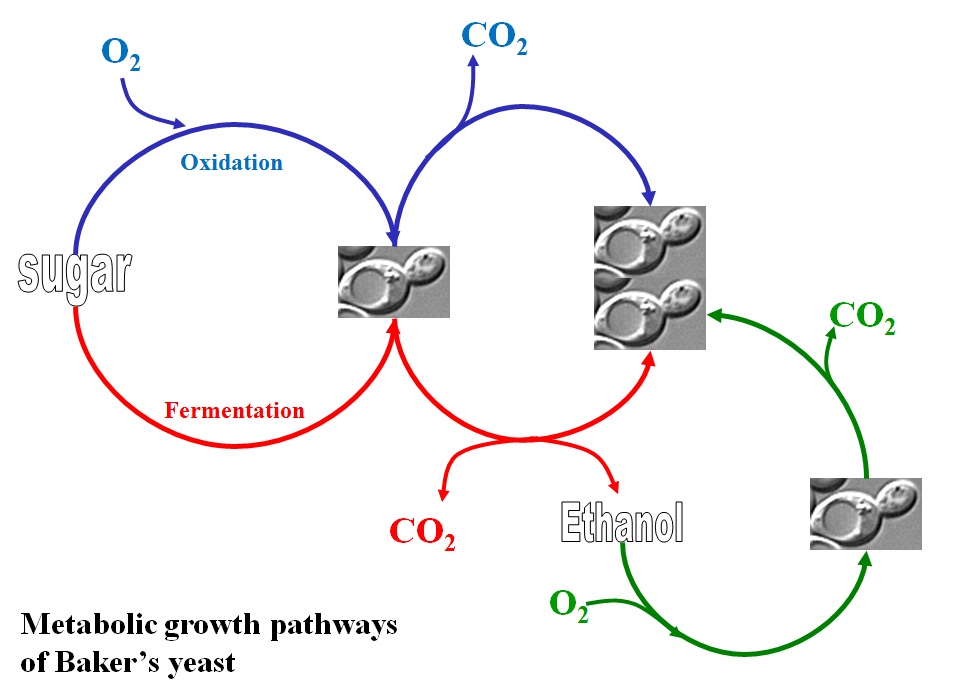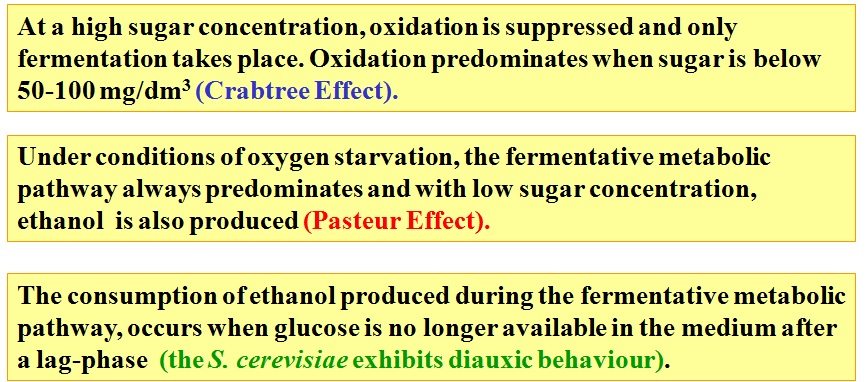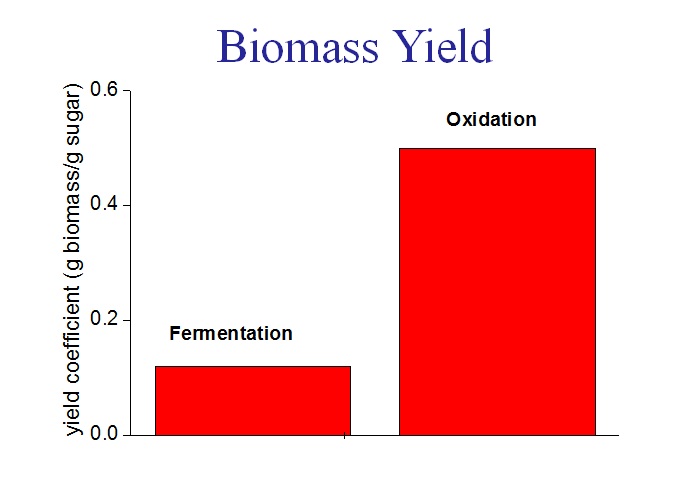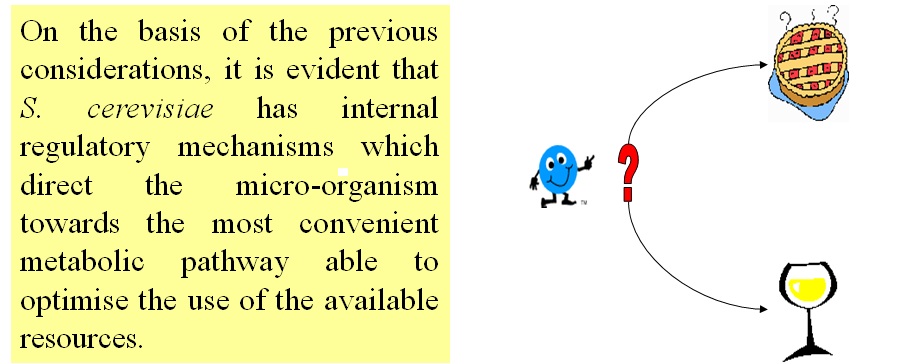Logo NICL
PRODUCTION OF YEAST
A general kinetic and mass transfer model to simulate the growth of bakerís yeast in bio-reactors [1-3]
During the aerobic growth of yeast, sugar and ethanol can be used as carbon and energy sources, whereas nitrogen and other minor nutrient requirements are satisfied by inorganic salts. The sugar can be metabolised via two different energy producing pathways: fermentation (1) with ethanol formation or oxidation (2), depending on the sugar concentration in the medium.


 Bio-mass yields on sugar are strongly related to the prevailing metabolic pathway, being maximal only when sugar is oxidised i.e. when its concentration remains below 50-100 mg/l. For this reason, in fed-batch processes for yeast production, the carbon source feed must be strictly controlled to ensure a bio-mass yield as close as possible to the theoretical value obtainable.
Bio-mass yields on sugar are strongly related to the prevailing metabolic pathway, being maximal only when sugar is oxidised i.e. when its concentration remains below 50-100 mg/l. For this reason, in fed-batch processes for yeast production, the carbon source feed must be strictly controlled to ensure a bio-mass yield as close as possible to the theoretical value obtainable.

[1]Industrial & Engineering Chemistry Research (2003), 42(21), 5109-5116.
[2] Catalysis Today (2001), 66(2-4), 437-445
[3] Chemical Engineering Journal (2001), 82(1-3), 347-354.